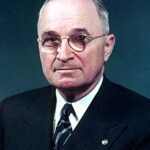The Presidential Decision
On April 8, 1952, President Harry Truman ordered federal seizure of America’s steel mills. The Truman steel seizure aimed to prevent a nationwide strike during the Korean War. Steel workers planned to walk out over wage disputes with mill owners. Truman feared the strike would cripple military production and endanger troops overseas. ⚠️ The decision bypassed Congress and relied solely on executive authority.
Constitutional Crisis Unfolds
Steel company executives immediately challenged Truman’s authority in federal court. They argued the president lacked constitutional power to seize private property without congressional approval. The case moved quickly through the judicial system. Legal experts debated whether wartime emergency powers justified the action. 📊 Within weeks, the dispute reached the Supreme Court as Youngstown Sheet & Tube Co. v. Sawyer.
Supreme Court Intervention
On June 2, 1952, the Supreme Court delivered a devastating 6-3 ruling against Truman. Justice Hugo Black wrote the majority opinion rejecting unlimited executive power. The court found no constitutional basis for the Truman steel seizure during wartime. 💰 Steel mills returned to private control immediately after the decision.
Impact:
Immediate Political Consequences
The Supreme Court ruling dealt a crushing blow to Truman’s presidency. Congressional Republicans seized the opportunity to attack executive overreach. Democratic allies distanced themselves from the controversial steel seizure decision. 🔥 Truman’s approval ratings plummeted to historic lows following the constitutional defeat. The ruling strengthened congressional opposition to White House initiatives.
Constitutional Precedent Established
Youngstown Sheet & Tube Co. v. Sawyer became a landmark constitutional law case. The decision established strict limits on presidential emergency powers during wartime. Future presidents could not claim unlimited authority without congressional backing. Legal scholars still cite the case when analyzing executive power boundaries. The ruling created the famous “Steel Seizure Case” framework for constitutional analysis.
Long-term Historical Impact
The failed steel seizure influenced decades of presidential decision-making. Vietnam War presidents faced Youngstown precedent when expanding military operations. 📉 Watergate prosecutors referenced the case against Nixon’s executive privilege claims. Modern terrorism and national security debates still invoke the ruling. The decision remains a cornerstone of constitutional law limiting executive authority during national emergencies.
